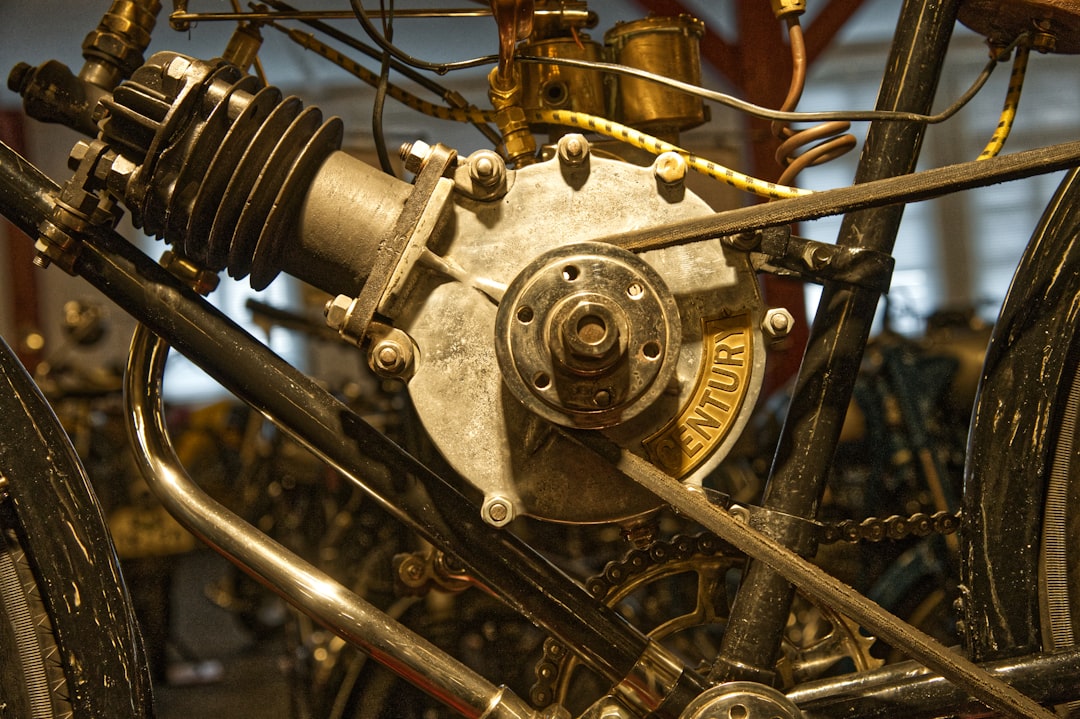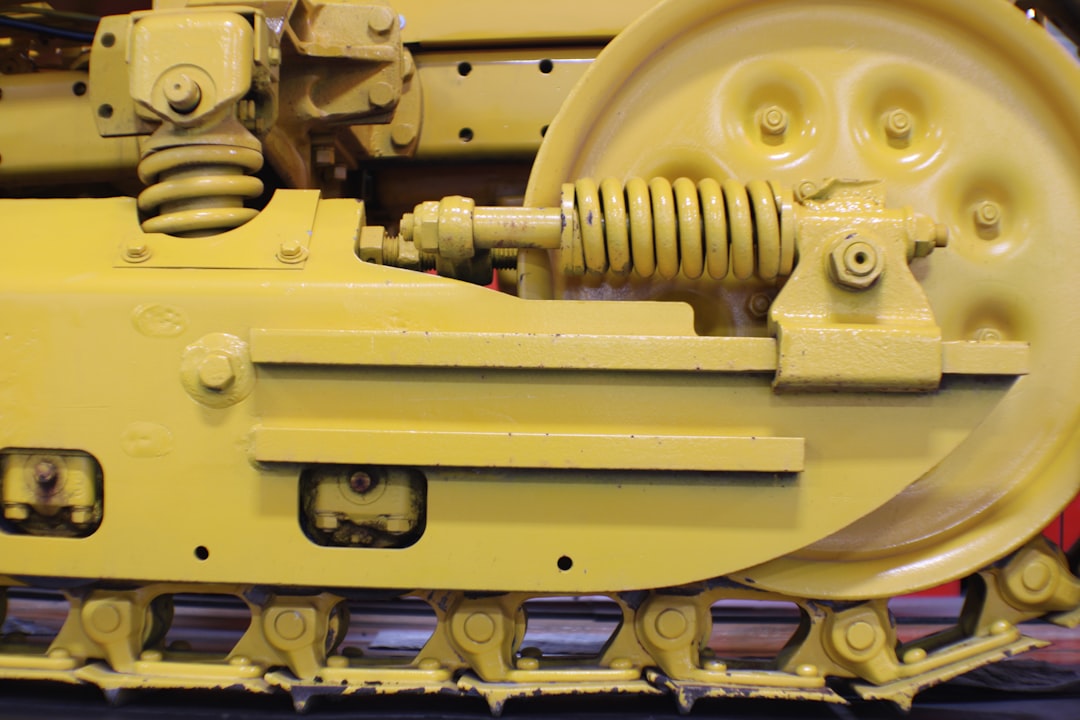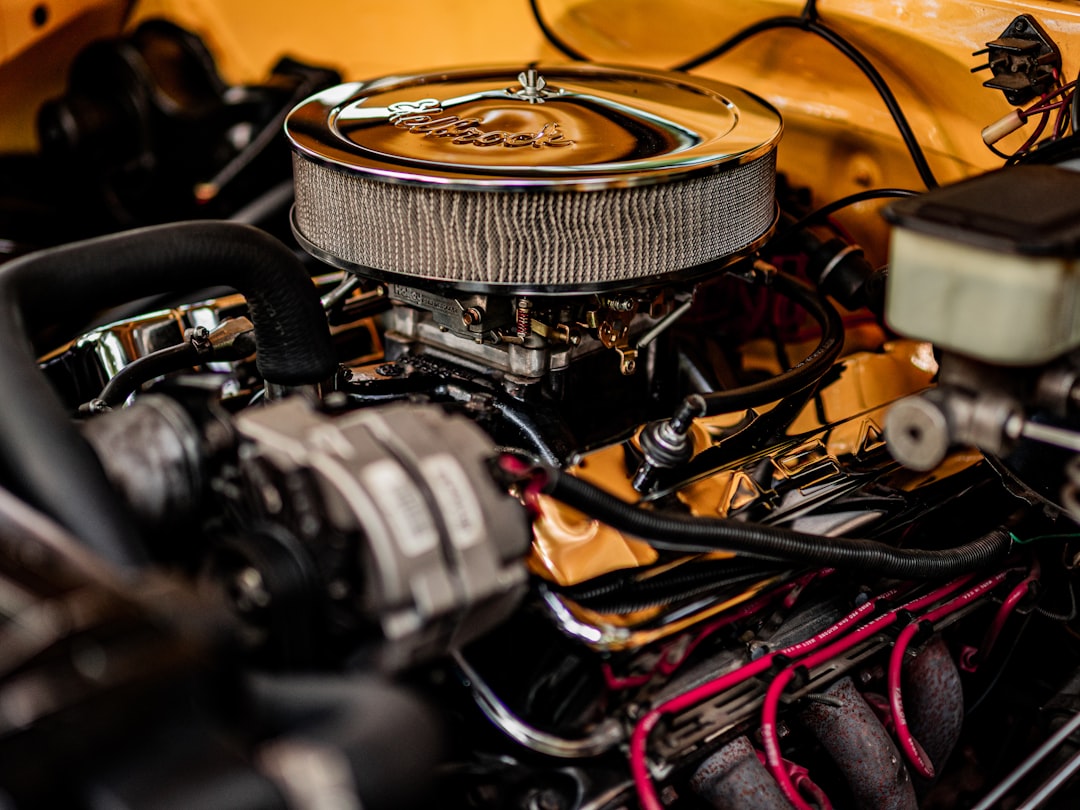

Engage prospects with a scan and streamline customer engagement with FREE QR code marketing tools by Sona – no strings attached!
Create a Free QR CodeFree consultation

No commitment

Engage prospects with a scan and streamline customer engagement with FREE QR code marketing tools by Sona – no strings attached!
Create a Free QR CodeFree consultation

No commitment
Transmission repair services are witnessing a significant evolution as technology reshapes both customer expectations and business operations. In an environment where every customer interaction can become a lead or a driver of retention, missing high-value prospects simply because their actions go untracked can be costly.
This shift in expectations has introduced a new challenge: creating a seamless connection between in-person service and digital follow-up. Customers now expect immediate answers, transparent processes, and easy access to information at every step. QR codes, once seen as a novelty, have become a practical solution for bridging these gaps, connecting physical assets like estimate forms and lobby signage to digital platforms that drive engagement and measurable results.
By embedding QR codes across print materials and shop touchpoints, transmission repair shops can offer instant access to diagnostic tools, booking systems, repair status, and warranty information. This approach also captures actionable data to address common issues like incomplete audience insights and missed follow-up. This article explores how advancing QR code solutions gives transmission repair professionals the tools to connect, inform, and re-engage customers for real business growth.

Transmission repair shops often struggle with prospects researching services but failing to connect in meaningful or trackable ways. Walk-ins might take a brochure and leave, callers may hang up during peak times, and busy staff can miss chances to gather full contact information. QR codes address this by blending physical and digital touchpoints so that every potential inquiry is captured and followed up with speed and precision.
Here is how to use QR codes in transmission repair environments for higher conversion and better customer experience:
By updating these workflows, shops ensure that opportunities lost from non-form interactions become actionable leads. Teams free up time to focus on customer care, while leaders gain accurate data to refine marketing and operations.
Many transmission repair providers struggle to identify and follow up with anonymous visitors, whether in-shop or online, which leads to lost business and missed upsell opportunities. Customers may browse service options, look at demo tools, or research pricing without taking the next step or providing contact data. That gap between interest and action is where QR codes deliver value that is easy to deploy and measure.
QR codes are important for transmission repair shops because they directly address challenges common to service-focused, offline-to-online customer journeys:
As a result, shops can recapture the interest of customers who browsed a demo but did not convert, then use QR-enabled tracking to send timely offers. The byproduct is a measurable, repeatable process that links real-world behavior to profitable outcomes.

Transmission repair shops risk losing momentum if customers leave without a digital follow-up path. QR codes solve this by creating multiple formats that map to specific customer needs. Choosing the right format for the right moment ensures that scans lead to relevant action and measurable outcomes.
The following formats are the most useful for transmission repair operations, from intake to post-service retention:
Most transmission shops start with web links and forms for intake and approvals, then layer in dynamic QR codes to keep promotions fresh and trackable. Over time, combining formats lets you personalize the experience, such as offering vCards on business signage and SMS-based support on invoices.

Growth often stalls at bottlenecks like paperwork-heavy intake, unanswered phone calls, or forgotten follow-ups after estimates are delivered. QR codes deployed wisely can turn these overlooked steps into channels for conversions or retention. The key is to connect high-intent, real-world moments to digital experiences that continue the conversation. See dealership QR strategies.
Consider these placement ideas and the friction they address:
By targeting these friction points with QR codes, shops significantly reduce churn and maximize each customer interaction. Access becomes instant, approvals speed up, and marketing dollars stretch further because every scan turns into a signal your team can act on.

QR codes shine when they reduce friction during common service interactions. Focus on use cases that shorten time to value and capture meaningful data you can use later for personalization or retargeting.
These core use cases streamline operations while layering in customer-friendly experiences. Customers get transparency and control, while your team benefits from higher data quality, improved throughput, and more predictable follow-up.
Missed segmentation and incomplete targeting are common in transmission repair marketing, especially when account-level tracking is thin. Every QR scan provides actionable data that helps you build retargeting audiences based on what people want and when they want it, rather than assumptions or stale lists.
Here is how to set up your QR system to create high-value audiences automatically:
Advanced QR platforms like Sona QR make it straightforward to identify high-fit contacts who show buying intent. Over time, you will build a performance dataset that improves outreach relevance and doubles as an early warning system for churn or delays in the decision process. For tactical retargeting steps, see Sona’s Playbook titled Intent-Driven Retargeting.
Transmission repair marketing often silos print, digital, and in-shop campaigns, which makes it hard to connect the dots between what people see and what they do. QR codes unify these efforts by turning physical materials into actionable digital entry points. Each scan is a data event that enriches your understanding of the customer journey.
Here are practical ways QR codes enhance your broader marketing strategy across the touchpoints most common in transmission repair:
QR codes serve as the offline onramp to your digital marketing engine. With a centralized platform like Sona QR, you can manage codes, monitor performance, and sync scan data with CRM and ad platforms so that every channel contributes to a connected, measurable funnel.
Before you generate your first code, ground your initiative in a clear plan. The steps below help you choose the right use case, build a clean customer path, and measure what matters. When possible, pair each step with a small test so your team learns quickly and scales what works.
Clarify what you want the QR code to achieve and who it serves. In transmission repair, popular goals include speeding up intake, capturing approvals faster, or turning invoices into review and warranty hubs. Start with a single moment in the customer journey where friction is obvious, such as waiting-room idle time or the gap between estimate and approval.
Pick a format that matches the action you want and the flexibility you need. Dynamic QR codes offer editability and analytics, which are crucial for optimization and long-term value.
Make the code obvious, on-brand, and trustworthy. Good design reduces confusion and anxiety, which improves scan rates and conversion.
Place codes where intent is highest and action is immediate. Think about line of sight, lighting, and the natural flow of your shop.
Treat QR deployment like a living campaign. Use data to improve message clarity, placement, and targeting over time.
A robust QR management tool streamlines planning, deployment, and optimization. With Sona QR, you can design, track, and update codes centrally, then connect insights to Sona.com for deeper attribution.
Transmission repair shops often struggle to connect offline moments like reading an estimate to online conversions like approvals or bookings. Without that link, calculating ROI or planning future campaigns becomes guesswork. A modern tracking stack connects the dots by capturing scan events, matching them to outcomes, and feeding intelligence back into your marketing and operations systems.
Modern tracking platforms help you translate scans into revenue with clear visibility:
For model selection, read Sona’s blog post titled Single vs Multi-Touch Attribution Models. With Sona QR and Sona.com, you can go beyond scan counts. Sona QR captures real-world engagement. Sona.com applies identity resolution and multi-touch attribution to tie those scans to pipeline and closed revenue. This lets you budget based on what actually works and double down on the placements and offers that generate measurable returns.
Small improvements in QR planning and execution can create large gains in response and revenue. Focus on accuracy, relevance, and speed so customers get what they need in a single scan while your systems capture clean, actionable data.
When paired with a central platform like Sona QR, these practices transform QR codes from a simple link into a powerful feedback loop that drives better customer experiences and higher lifetime value.

Transmission repair shops across different markets are using QR codes to reduce friction, capture attribution, and spark re-engagement. The most effective programs keep the customer’s immediate need in mind, then make the next step fast and measurable.
These examples show how QR touchpoints convert ordinary moments into measurable marketing and service wins. No single placement creates a breakthrough on its own, but together they form a connected experience that compounds results over time.
Your QR program will perform best when it pairs clear value with frictionless execution. Use the tips below to maximize scan rates and conversion, and avoid mistakes that slow momentum.
Tips:
Common pitfalls:
Avoid these issues through careful design, ongoing testing, and team training. By embedding QR solutions as a responsive, data-driven part of the service journey, you create a system that improves both customer satisfaction and shop performance.
QR codes are reshaping the transmission repair industry by transforming everyday interactions into actionable insights. By making every service document, touchpoint, or waiting area sign a gateway to digital engagement, shops reduce the risk of missing high-value leads and capture behavioral data that previously went unnoticed.
Providers who integrate QR code solutions into daily operations are able to personalize follow-ups, recover abandoned prospects, and uncover new upsell or cross-sell opportunities. This helps grow loyalty and revenue in measurable ways because scan analytics reveal which offers resonate and which placements convert best.
Modern QR platforms bridge offline service with digital action, turning missed inquiries, anonymous visits, or static reminders into proactive marketing and operational improvements. The path to smarter engagement and stronger business results begins by understanding which QR strategies fit your unique shop environment, then rolling them out with consistent measurement and iteration. With Sona QR, you can generate your first codes in minutes, manage them centrally, and connect scan activity to revenue insights that scale with your business. Start creating QR codes for free.
QR codes have revolutionized transmission repair services by turning traditional customer interactions into seamless, data-driven opportunities. Whether it’s streamlining access to service information, enhancing customer trust through instant vehicle diagnostics, or simplifying appointment scheduling, QR codes replace outdated processes with fast, mobile-friendly solutions that enhance every step of the repair journey. Imagine customers scanning a code to instantly access personalized service histories or maintenance tips, improving satisfaction and loyalty.
With Sona QR, you can effortlessly create dynamic, trackable QR codes that update in real time without the need for reprinting. This means you can monitor which codes drive the most appointment bookings, tailor marketing efforts on the fly, and directly link scans to revenue growth. No missed leads, no guesswork—just smarter, more effective transmission repair services marketing.
Start for free with Sona QR today and transform every scan into a new customer, a smoother service experience, and measurable business growth.
Choose a transmission repair service that offers transparent processes, immediate answers, and easy access to information at every step, ensuring seamless customer experience and reliable follow-up.
Common signs include unusual noises, delayed or rough shifting, transmission slipping, fluid leaks, and warning lights indicating transmission issues.
Transmission repair costs vary depending on the issue severity but shops often provide personalized cost calculators accessible via QR codes for accurate estimates.
Best practices include integrating QR codes into print and digital materials for seamless offline-to-online engagement, using clear calls to action, tracking scan data for retargeting, and unifying multi-channel campaigns to measure and optimize performance.
QR codes connect physical touchpoints like brochures, signage, and invoices to interactive digital platforms for booking, repair status updates, warranty info, and feedback collection, enabling immediate access, data capture, and personalized follow-up.
Useful QR code formats include web links for booking and diagnostics, forms for intake and feedback, vCards for contact saving, SMS or email preloaded messages for inquiries, and dynamic QR codes for flexible content updates.
Place QR codes in high-traffic and high-intent areas such as reception counters, waiting areas, repair estimate paperwork, invoices, window decals for after-hours inquiries, flyers, and post-service assets.
QR codes capture scan context and customer intent at different journey stages, allowing segmentation by audience type and syncing data with CRM and ad platforms to create targeted campaigns that re-engage prospects and customers.
Avoid poor visibility or scannability, cluttered or slow-loading landing pages, and untracked or unlabeled scan data that lead to missed follow-ups and lost opportunities.
Use QR tracking platforms to monitor scan rates, engagement by location and time, match scans to outcomes like appointments or payments, and integrate data with CRM systems for attribution and ongoing optimization.
Use Sona QR's trackable codes to improve customer acquisition and engagement today.
Create Your FREE Trackable QR Code in SecondsJoin results-focused teams combining Sona Platform automation with advanced Google Ads strategies to scale lead generation

Connect your existing CRM

Free Account Enrichment

No setup fees
No commitment required

Free consultation

Get a custom Google Ads roadmap for your business






Launch campaigns that generate qualified leads in 30 days or less.
